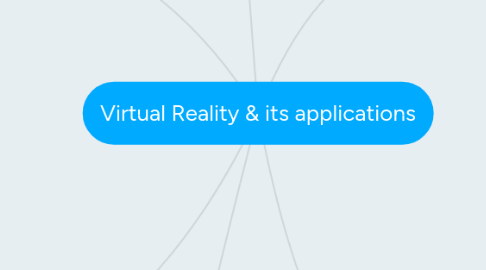
1. Trend
1.1. 2016
1.1.1. people will start to learn more about VR
1.1.2. developing sense of what people prefer to do with VR
1.1.3. go to the middle ground between the value n the use of VR
1.2. spend more budget
1.2.1. VR movies
1.2.2. hardware to support software
1.2.3. early 2017 targeted on VR games
1.2.4. equipments to support software
1.3. Mobile-driven VR
1.3.1. getting free VR
1.3.2. Dis-value
1.3.3. low-end VR to the mass
2. Technology
2.1. create sensory experiences
2.1.1. generate realistic images/sound
2.1.2. sight
2.1.3. touch
2.1.4. sound
2.2. Displayed on...
2.2.1. Virual Reality Headset(called HTC Vive)
2.2.2. projector screen
2.2.3. computer screen
3. Bad influence
3.1. Social network
3.1.1. Affecting interpersonal communication as people are addicted in the virtual world
3.1.2. reduce the extra-curricular activties
3.2. Health
3.2.1. Eye problems, e.g. eye strain, blurred vision
3.2.2. Physical health
3.2.2.1. Headaches
3.2.2.2. Muscle strain
3.2.3. Mental health
3.2.3.1. may cause illusion due to the prolonged participation in the virtual world
3.2.3.2. insomnia
3.3. Academic/Working Performance
3.3.1. Productivity decrease
3.3.2. Insufficient time for completing the tasks
3.3.3. Being distracted, cannot concentration well
3.3.4. Lack of energy
3.4. Lifestyle
3.4.1. Less time for sleeping, eating (rest)
3.4.2. Not willing to do regular exercise
3.4.3. encourage the act of escapism from the real world indirectly
3.4.3.1. intensify the phenomenon of "hidden youths"
3.5. Money
3.5.1. waste money as it is expensive
4. Types
4.1. Enhanced Reality
4.2. Desktop Virtual Reality
4.3. Telepresence
4.4. Immersive Virtual Reality
4.5. QuickTime Virtual Reality,(QTVR)
5. Use
5.1. Sport
5.1.1. recreate action in VR for sportsman
5.1.2. experience the challenge in the sportsman aspect
5.2. Architecture
5.2.1. using the 360 video as preview
5.2.2. Structural designing
5.2.2.1. create an architecture model
5.3. entertainment
5.3.1. film/video game
5.3.1.1. e.g. roller coaster
5.3.2. simulator
5.3.2.1. experience
5.3.2.1.1. e.g. fighting with vampires and zombies
5.4. Medicine
5.4.1. treatment for PTSD
5.4.1.1. simulate the war
5.4.2. VR diagnostics
5.4.3. Cure patients with mental disorders more quickly
5.4.3.1. exposure therapy for phobias&anxieties
5.5. Law implementation
5.6. Tourism
5.6.1. visit tourist attractions without flying to those countries
6. History
6.1. Before 1950s
6.1.1. The original idea of virtual reality was suggested by a science fiction.
6.1.1.1. Book :"Pygmalion's Spectacles"
6.1.1.2. Published in 1935
6.1.1.3. Author: Stanley G. Weinbaum
6.2. 1950-1970
6.2.1. Two innovations created by Morton Heilig
6.2.1.1. Sensorama
6.2.1.2. Telesphere Mask
6.2.1.2.1. The first VR Head Mounted Display
6.2.2. Ivan Sutherland created the first virtual reality
6.2.2.1. head-mounted display (HMD) system
6.2.3. Philco Corporation engineers (Comeau & Bryan) created the first motion tracking HMD
6.3. 1970-1990
6.3.1. Aspen Movie Map was created at Massachusetts Institute of Technology in 1978.
6.4. 1990-2000
6.4.1. Sega VR headset was developed for arcade games and the Mega Drive in 1991.
6.4.2. First portable gaming console
6.4.2.1. Nintendo Virtual Boy
6.5. 21st century
6.5.1. The technology of virtual Reality is mature, common and rapid developing.
6.5.1.1. The video game industry releases many virtual reality games.
6.5.1.2. Many companies produce virtual reality products, eg. virtual reality headsets, Oculus VR.

